

Damion Smy
Boxy new KGM Musso unveiled to take on HiLux and Ranger ahead of Australian launch
11 Hours Ago
Here are some of the top options in the popular and ever-expanding mid-sized SUV market for 2023.

Deputy Marketplace Editor


Deputy Marketplace Editor
The best mid-sized SUVs are everything to their owners – they’re practical, spacious, and equally able to handle the demands of the everyday commute and weekend adventures.
As such, they’re incredibly popular Down Under. In fact, they’re the best-selling class of car on the sales charts so far in 2024, ahead of utes.
Car manufacturers have noticed, and there are now more than 40 mid-sized SUVs available on the Australian market, leaving buyers with plenty of choice.
Choice can be both a blessing and a curse. Here’s a cheat sheet on the 10 best selling options in Australia to help narrow down your options.
Toyota’s mid-sized SUV, the RAV4, was the most popular among Australian buyers according the VFACTS sales charts, with 29,627 deliveries in 2023.

That is unsurprising considering the practical edge the RAV4 holds over its rivals. It has a competitive 580 litres of boot space and uses a claimed 4.8L/100km on the combined cycle when specified with the in-demand hybrid option.
Those advantages come at a price. The most basic RAV4 GX 2WD retails for $39,760 before on-road costs, making it one of the most expensive entry-level cars in this list.
The range-topping RAV4 Edge AWD Hybrid will set you back $58,360 before on-road costs and features a larger 2.5-litre naturally aspirated four-cylinder petrol engine mated with a hybrid system, 19-inch alloy wheels, unique exterior styling features, active rear cross-traffic assist, and low-speed reverse AEB.
BUY: Get in touch with a dealer about a Toyota RAV4 MORE: Everything Toyota RAV4
Australians are paying up to put a Tesla Model Y in their driveway.
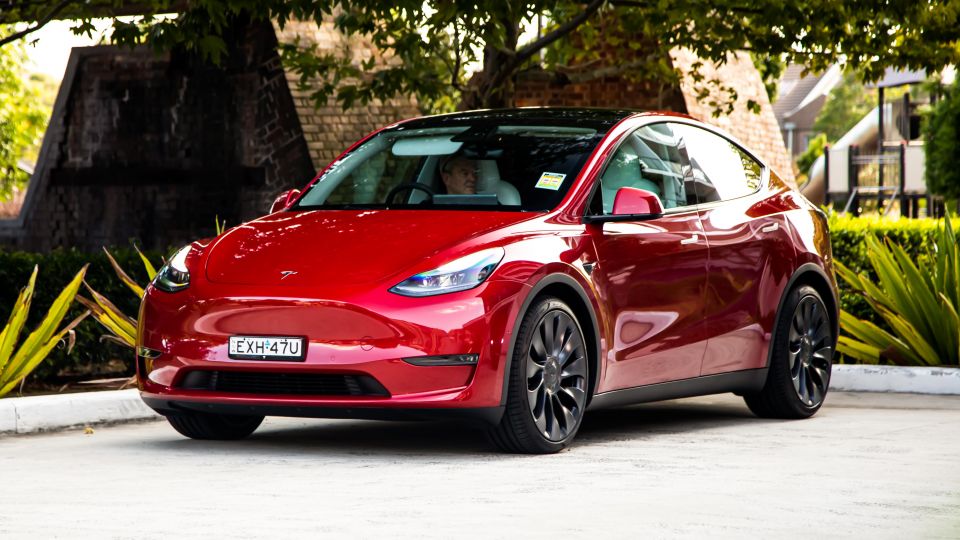
Despite being the most expensive car on this list, Tesla’s mid-sized SUV ranks an impressive second for sales, underlining the hold the American carmaker has over the electric landscape.
The Model Y kicks off at $65,400 before on-roads, with the base car featuring a single motor powering the rear wheels, propelling it to 100km/h in 6.9 seconds. The dual-motor all-wheel drive Performance cuts that to 3.7 seconds, but you’ll have to cough up an extra $26,000 for the privilege.
The Model Y doesn’t require stops at the servo on its way to a claimed range of 455km (base). As for when the battery gets low? Tesla’s charging network is Australia’s best for those on the move, although most owners will home charge.
Luggage space measures a whopping 854L including the frunk, which is best in class.
MORE: Everything Tesla Model Y
The Mitsubishi Outlander is third on this list and starts at $37,240 before on-road costs. The range extends upwards of $70,000 before on-roads, with the Exceed Tourer PHEV topping the line-up.

That option of seven seats is a point of difference for the Outlander – although it is relatively thirsty compared to its rivals in petrol form, using between 7.5-8.1L/100km depending on the model.
The PHEV models remedy this, using a miserly 1.5L/100km on the combined cycle.
Boot space for five-seat cars ranges from 485L to 494L, although there is plenty of configurability.
BUY: Get in touch with a dealer about a Mitsubishi Outlander MORE: Everything Mitsubishi Outlander
Starting from $36,110 before on-road costs, the Mazda CX-5 is another popular option despite its smaller stature.
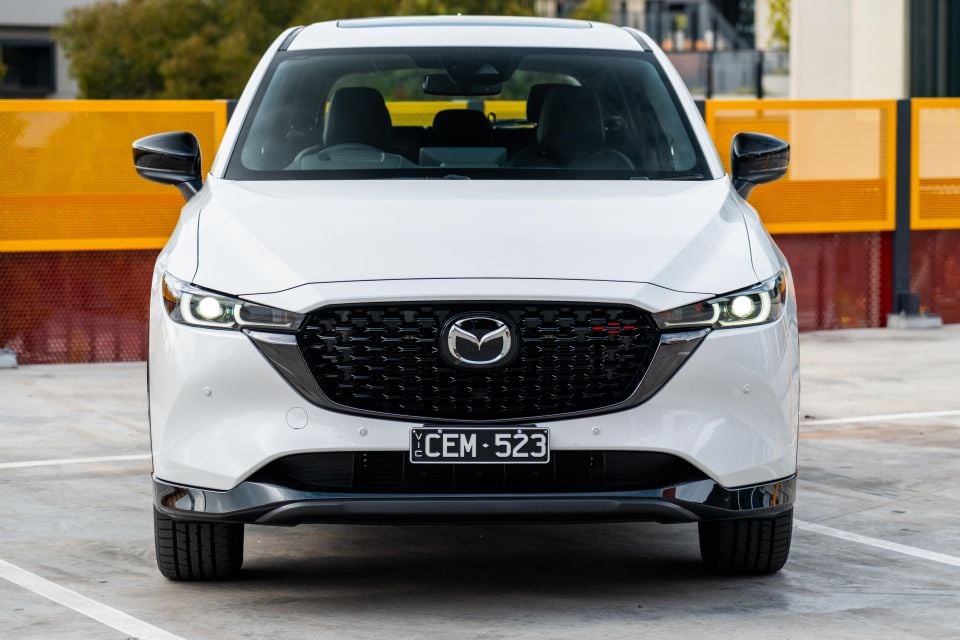
The CX-5 is the lightest and shortest car here, resulting in some sacrifices when it comes to practicality. Boot space measures in at just 438L with the rear seats up, the least of these 10 cars.
The Mazda is only available with an automatic transmission. There are three engine options – a 2.0-litre naturally aspirated four-cylinder petrol producing 115kW of power and 200Nm of torque; a more powerful 2.5-litre version of that powertrain; and a turbocharged variant with 170kW and 420Nm.
Petrol cars vary between 6.9 and 8.2L/100km on the combined fuel economy test.
BUY: Get in touch with a dealer about a Mazda CX-5 MORE: Everything Mazda CX-5
The Hyundai Tucson is among the cheaper cars on this list, starting at just $35,150 before on-road costs.
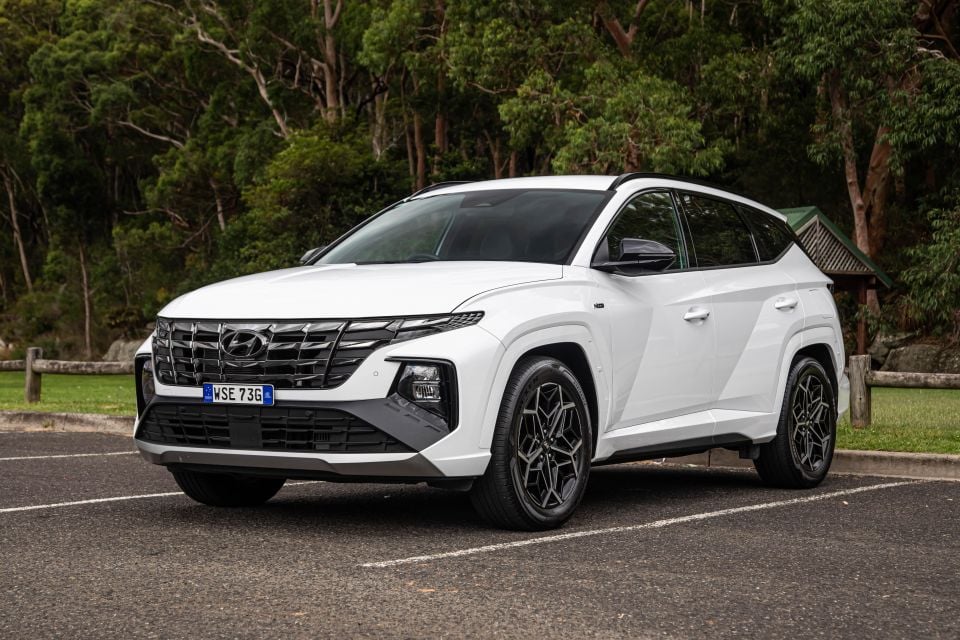
That makes it an affordable entry point into the segment, although the flagship Highlander 2.0TD AWD still commands a $52,900 price tag before on-roads.
All Tucson models are available with a 2.0-litre naturally aspirated four-cylinder petrol engine making 115kW of power and 192Nm of torque; while the Elite and Highlander variants are offered with a 1.6-litre turbocharged four-cylinder petrol engine (132kW/265Nm); as well as a 2.0-litre four-cylinder turbo-diesel (137kW/416Nm).
Efficiency is quoted at 8.1L/100km for the base engine, while the turbo-diesel model manages 6.3L/100km. Hyundai quotes boot space at 539L, middle of the road for this segment.
BUY: Get in touch with a dealer about a Hyundai Tucson MORE: Everything Hyundai Tucson
The Subaru Forester is relatively expensive out of the box, starting at $37,890 before on-road costs for the 2.5i AWD, but tops out under $50,000 before on-roads with the Hybrid S.
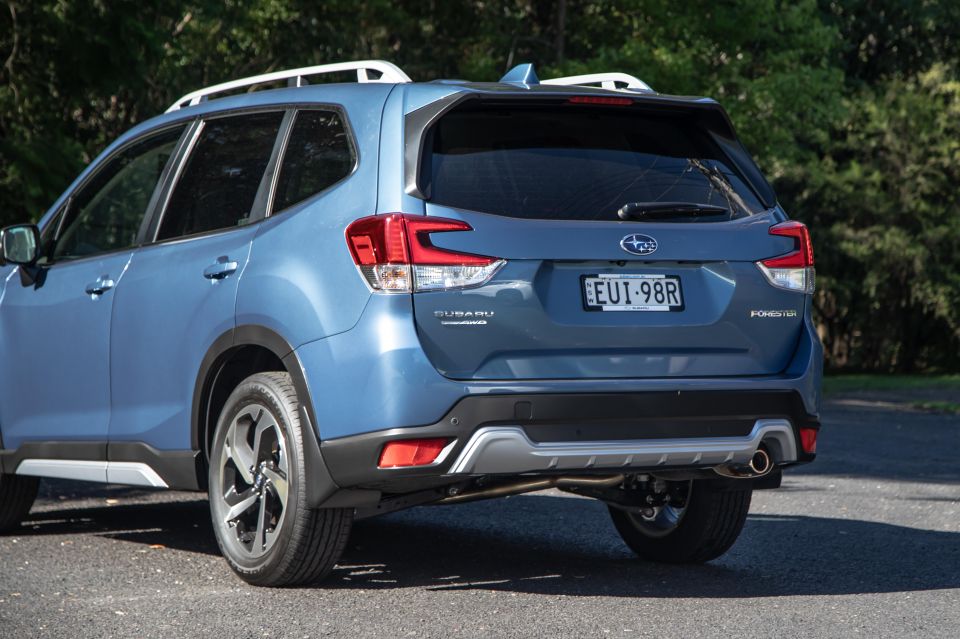
For that you get a boot with around 500L of capacity, depending on the model, and a classic Subaru shape.
Unlike the other cars on this list, the Forester is offered with just two engines: a 2.5-litre naturally aspirated flat-four engine producing 136kW of power and 239Nm of torque, and a 2.0-litre four-cylinder hybrid. Both are mated to a CVT with torque sent through an all-wheel drive system.
Fuel economy figures of 7.4L/100km for the petrol and 6.7L/100km for the hybrid are mid-range for this segment, although the fuel tank is a large 63L in the petrol car.
BUY: Get in touch with a dealer about a Subaru Forester MORE: Everything Subaru Forester
Penny pinchers should take a liking to the Kia Sportage, which opens at a sharp price of $32,795 before on-road costs for the S Manual.
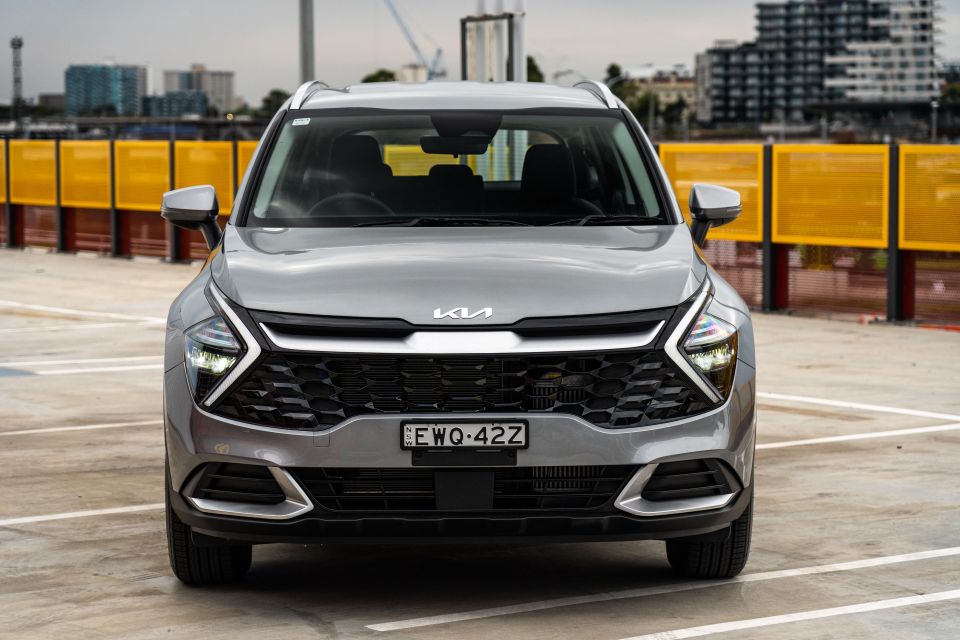
The base model is powered by a naturally-aspirated 2.0-litre petrol four-cylinder engine with 115kW of power and 192Nm of torque, while a 1.6-litre four-cylinder turbo petrol and 2.0-litre four-cylinder turbo-diesel are also available with 132kW and 137kW, respectively.
Kia’s mid-sized SUV matches most other ICE offerings in the segment in terms of efficiency, quoting fuel usage between 6.3L/100km and 8.1L/100km depending on variant.
At 542L, the Kia’s boot capacity is competitive for the segment. The Sportage also scores a major win on the connectivity front, featuring wireless Apple CarPlay and Android Auto in base specification, which can’t be said for the Model Y.
BUY: Get in touch with a dealer about a Kia Sportage MORE: Everything Kia Sportage
Like the Mitsubishi Outlander with which it shares it bones, the X-Trail is available in either five or seven-seat configurations. Pricing starts at $37,250 before on-road costs.
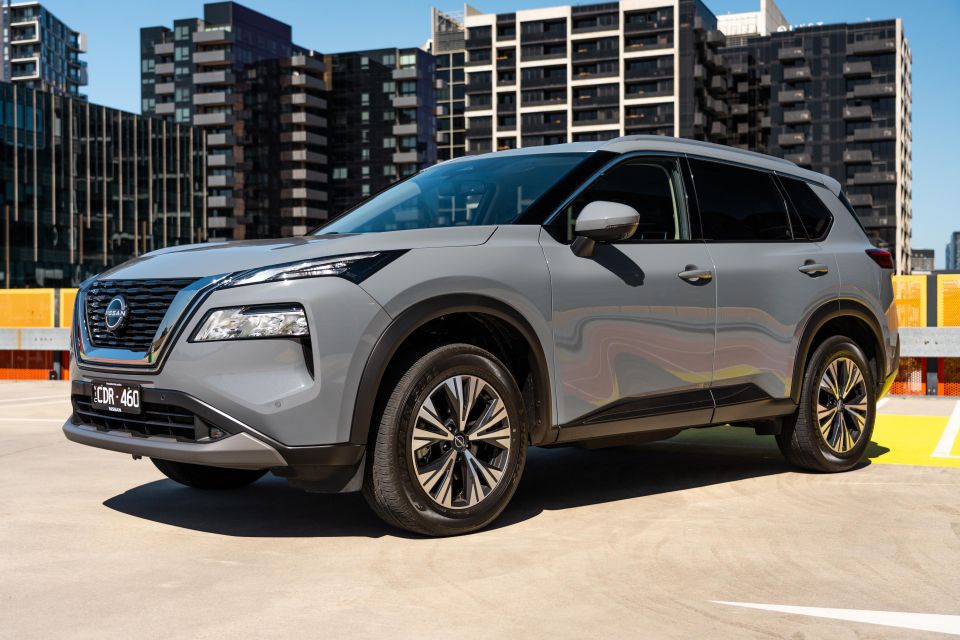
As well as offering the option of seven seats, the X-Trail can be had with either petrol or hybrid power, courtesy of Nissan’s e-Power system.
The e-Power series hybrid reduces fuel consumption to a claimed 6.1L/100km. Boot space is quoted at 575L for five seat variants – just 10L less than the petrol powered models, and more than most vehicles in this segment.
BUY: Get in touch with a dealer about a Nissan X-Trail MORE: Everything Nissan X-Trail
The electric BYD Atto 3 is China’s cheaper alternative to the Model Y, starting from $48,011 before on-road costs for the Standard Range.

Both the Standard and Extended Range variants are powered by a single electric motor producing 150kW and 310Nm, but the top spec car can go a claimed 420km between charges compared to 345km for the base model.
The size of the Atto 3 relative to some of the cars on this list limits its practicality, with boot space measuring just 440L.
With that said, the BYD should be easy to manoeuvre in urban environments, and prospective buyers won’t find another car on this list with the same level of interior flair.
BUY: Get in touch with a dealer about a BYD Atto 3 MORE: Everything BYD Atto 3
In a world of confusing trim specs and option packs, the GWM Haval H6 keeps things simple.
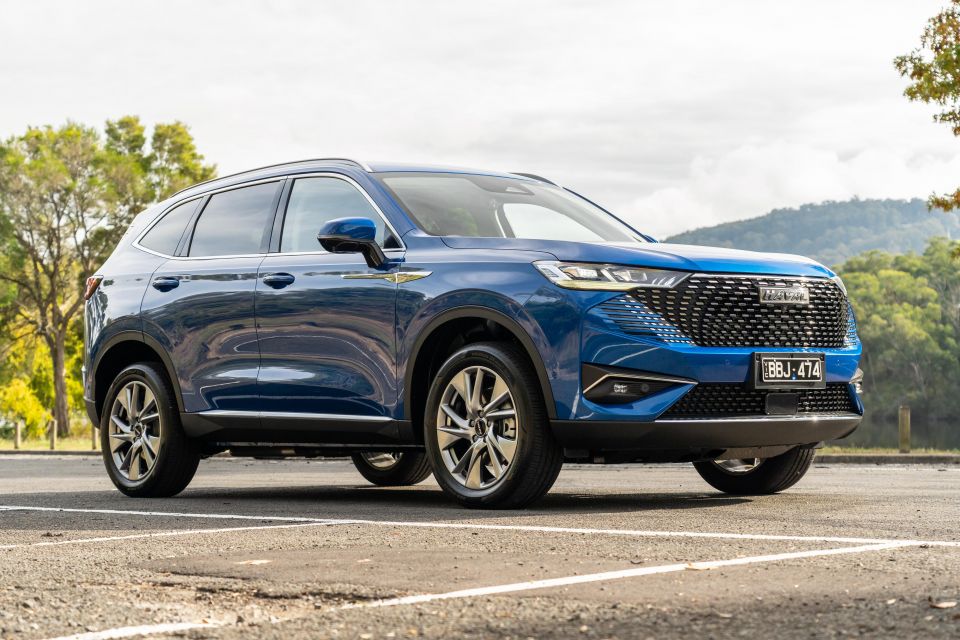
The GWM Haval H6 starts from just under $35,000 before on-road costs and can be bought in Premium, Lux or Ultra specification.
Two powertrains are offered; a turbocharged 2.0-litre four-cylinder petrol engine producing 150kW of power and 320Nm of torque, and a hybrid unit with outputs of 179kW and 530Nm.
In petrol guise, the front-wheel drive H6 use a claimed 7.4L/100km, require just 91 RON regular unleaded petrol, and can cover plenty of kilometres thanks to a 60L fuel tank.
Boot space is impressive at 600L.
BUY: Get in touch with a dealer about a Haval H6 MORE: Everything Haval H6
Josh Nevett is an automotive journalist covering news and reviews, with a background in motorsport journalism.


Damion Smy
11 Hours Ago


Damion Smy
12 Hours Ago


Damion Smy
14 Hours Ago


Damion Smy
15 Hours Ago


Damion Smy
17 Hours Ago


Damion Smy
18 Hours Ago